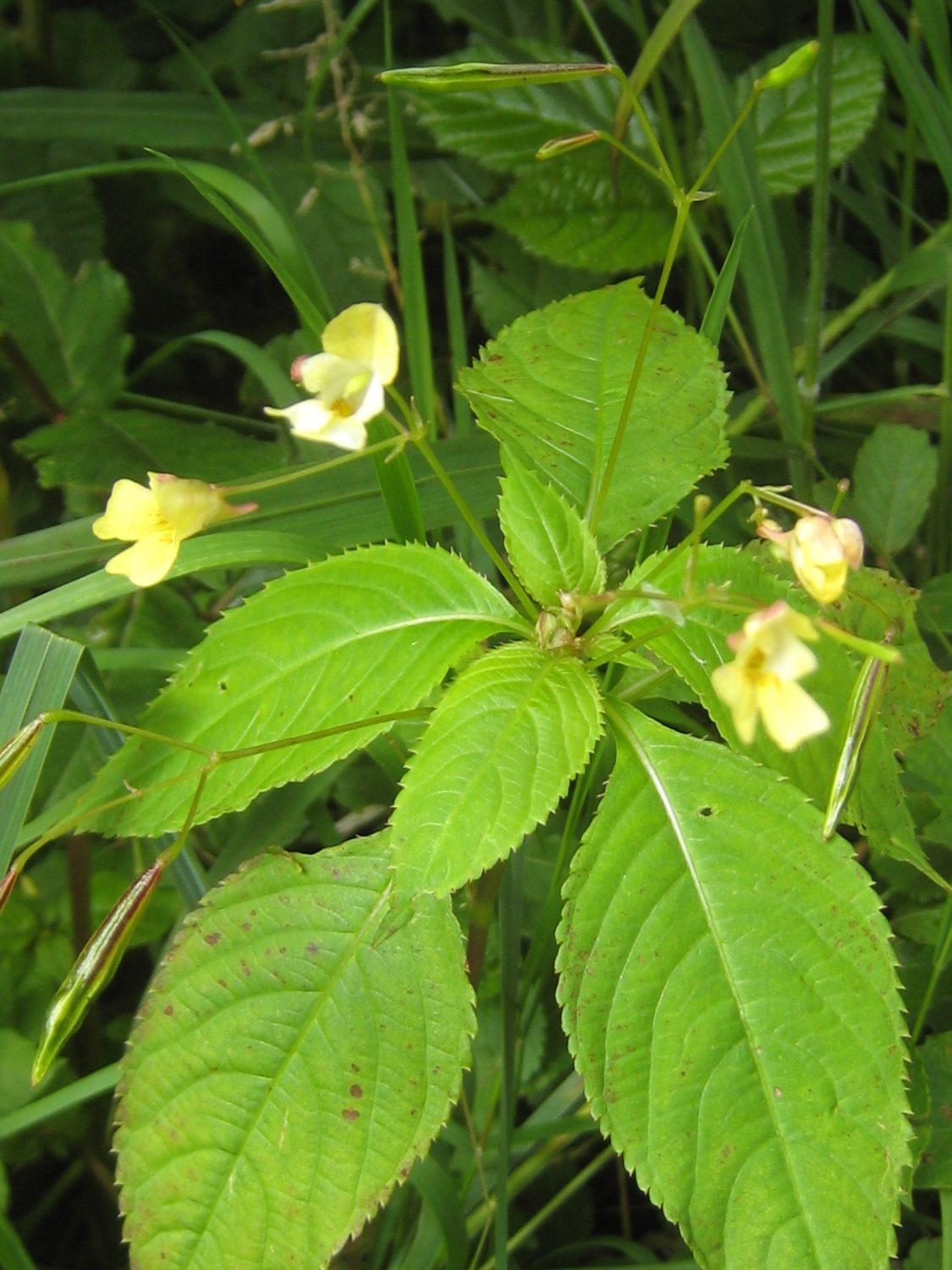Introduced species: Small-flowered touch-me-not (Impatiens parviflora)
Description: Don’t panic! This isn’t the impatiens from your Mothers’ Day hanging basket; the only similarity is those exploding seed pods (see below). Small balsam (as it’s also known) varies widely in size; generally under 30 cm (1 ft) tall (and often MUCH less), it can achieve heights of 1.5 m (5 ft!). This balsam-family annual thrives in moist, shady areas, where its small stature and prolific seeding allow it to spread rapidly (and often undetected, until sheer numbers make it impossible to miss). The simple, egg-shaped leaves with fine teeth are generally 5 cm (2 in) long by half as wide, generally from a single, somewhat succulent stem, and are edible when cooked. (NOTE: Always triple-check your identification before eating any unknown plant.) Small yellow flowers with faint red spots give way to roughly 2-cm (0.5-in) long, club-shaped seed capsules, each containing 1-5 seeds. Native to the mountains of central Asia, the plant is now widespread, considered an invasive species in much of Europe and North America. It is not *yet* widely distributed in the Pacific northwest, but there are multiple known populations within the Johnson Creek watershed (both under active control).
Spread: The seed capsules become touch-sensitive in mid- to late spring, such that contact causes them to explode (whence “touch-me-not”); this allows the plant to fling its seeds wantonly around forest understory areas. Even healthy forests are susceptible to an incursion of this prolifically seedy visitor.
Control: CONSTANT VIGILANCE! Spotting this plant early and pulling it before it can set seed is the key to making sure it doesn’t flood the ground in area forests, crowding out native species. Thankfully, the very shallow roots of small balsam make its removal fairly easy.
Native replacement: Since this species is not yet widespread, it’s unlikely to be something you’d see in your yard (unless you’re in the East Buttes area of outer SE Portland or Gresham, where the plant has been found). Should it turn up, however, a great native groundcover with a yellow flower that thrives in similar habitats is stream violet (Viola glabella), whose cheery blooms and attractive, heart-shaped leaves will gladden any moist, shaded corner of the garden.


